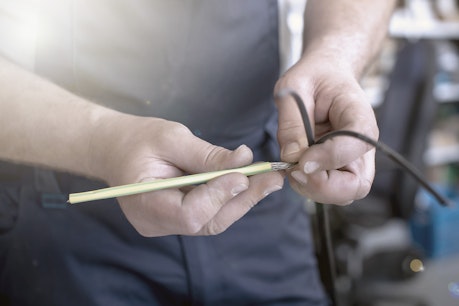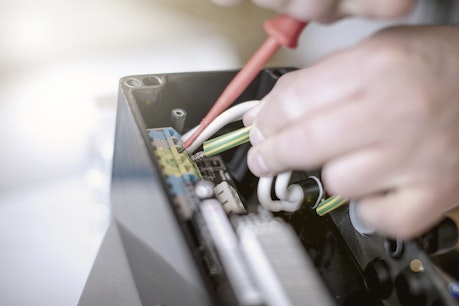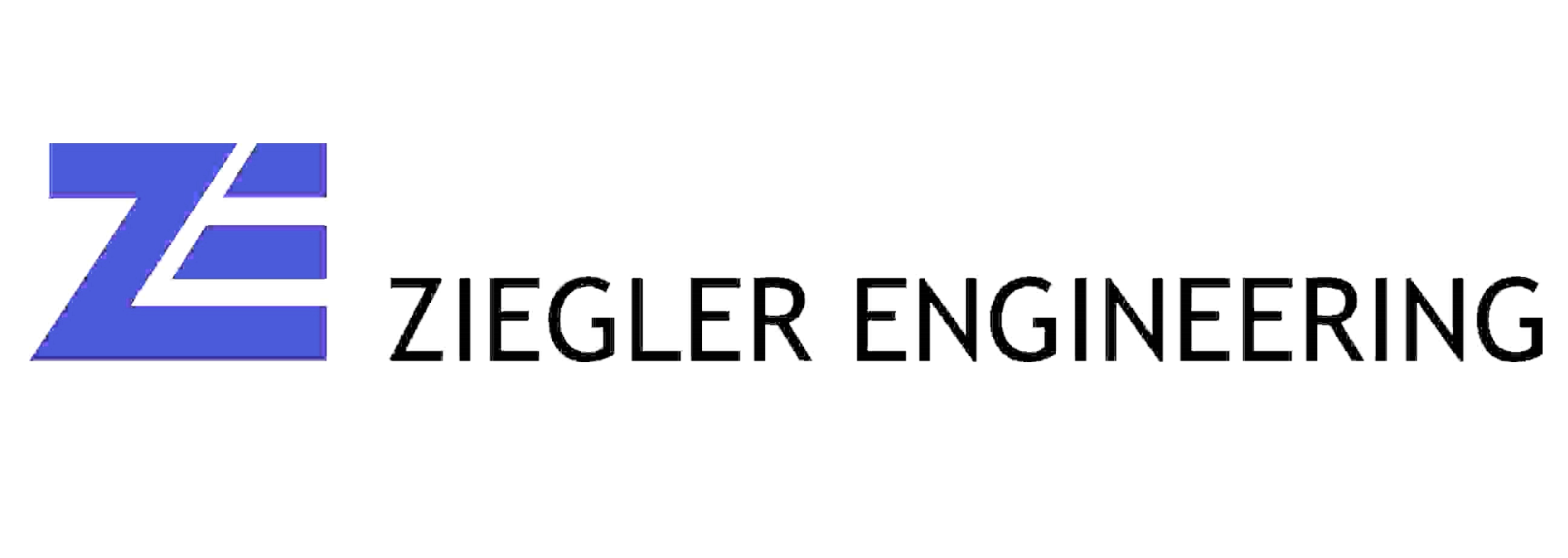
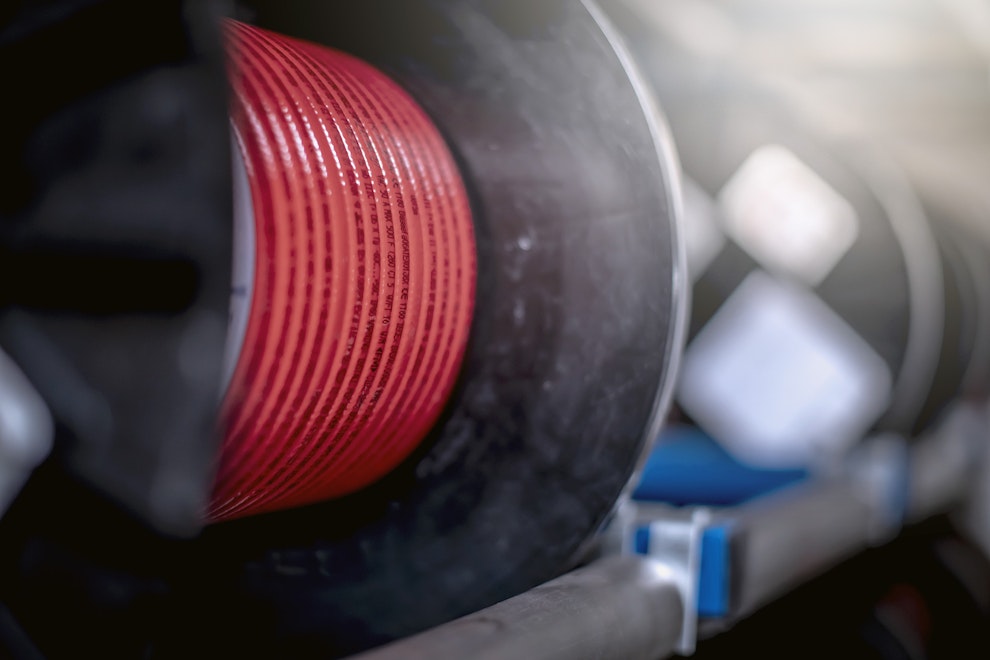
Heating cables
Heating cables and heating tapes emit heat over their entire length and are suitable as electrical trace heating for tanks, water lines or gutters, for example, as well as for outdoor industrial pipe systems. Pipe trace heaters provide, for example, reliable frost protection, thereby keeping pipes from freezing and preventing damage and operational failure.
Product | Typical applications | Max. passive temperature | Power levels @ 10°C [W/m] | Download Technology | Download Approval |
BTV  | 230 VAC Self-regulating Please ask for ZE: applicable: 200...277 VAC available: 110...130 VAC Frost protection temperature maintenance up to +50°C | 65 °C | 9 16 25 29 | Data sheetInstallation Instructions | EU-Declaration of ConformityATEX Certificate (System)IECEx Certificate |
QTVR  | 230 VAC Self-regulating Please ask for ZE:: applicable: 200...277 VAC available: 110...130 VAC Frost protection temperature maintenance up to +90°C | 110 °C | 38 51 64 | Data sheetInstallation Instructions | EU-Declaration of ConformityATEX Certificate (System) |
XTVR  | 150 / 250 °C | 9 16 25 32 38 48 64 | Data sheetInstallations Instructions | EU-Declaration of ConformityATEX CertificateIECEx Certificate | |
HTV  | 230 VAC Self-regulating Please ask for ZE: applicable: 190...277 VAC Frost protection temperature maintenance up to +205° | 205 / 260 °C | 9 16 25 32 38 48 64 92 | Data sheetInstallation Instructions | EU-Declaration of ConformityATEX Certificate (System)IECEx Certificate (System) |
FS-C10-2X  | |||||
10XL2-ZH  | |||||
15XL2-ZH  | |||||
26XL2-ZH  | |||||
31XL2-ZH  | |||||
GM-2X  | |||||
GM-2XT  | |||||
HWAT-L  | |||||
HWAT-M  | |||||
HWAT-R  |
Product | Typical applications | Max. passive temperature | Power levels @ 10°C [W/m] | Download Technology | Download Approval |
VPL  | 230 / 400 VAC Power-limiting Please ask for ZE: verfügbar: 120...480 VAC Frost protection temperature maintenance up to +235°C | 260 °C | 15 @ 230 V 30 @ 230 V 45 @ 230 V 61 @ 230 V 12 @ 400 V 24 @ 400 V 36 @ 400 V 49 @ 400 V | Data sheetInstallation Instructions | EU-Declaration of ConformityATEX Certificate (System)IECEx Certificate (System) |
Product | Typical applications | Max. passive temperature | Power levels @ 10°C [W/m] | Download Technology | Download Approval |
FMT / FHT  | 230 VAC (FMT) 230 / 400 VAC (FHT) Parallel PI Frost protection Temperature maintenance up to +150°C (FMT) / 230 °C (FHT) | 200 °C FMT 260 °C FHT | 10 @ 230 V 20 @ 230 V 30 @ 230 V 40 @ 230 V 10 @ 400 V 20 @ 400 V 30 @ 400 V | Data sheetInstallation Instructions | EU-Declaration of ConformityATEX CertificateIECEx Certificate |
Product | Typical applications | Max. passive temperature | Power levels @ 10°C [W/m] | Download Technology | Download Approval |
XPI-F  | 1...300 / 500 VAC Single conductor PI Frost protection Temperature maintenance up to +90°C | 90 °C (100°C for a short time) | typ. 20 W/m | Data sheetInstallation Instructions | |
XPI  | 1...450 / 750 VAC Single conductor PI Frost protection Temperature maintenance up to +220°C | 260 / 300 °C | typ. 35 W/m | Data sheetInstallation Instructions | |
XPI-S  | 1...450 / 750 VAC Single conductor PI Frost protection Temperature maintenance up to +220°C | 260 / 300 °C | typ. 35 W/m | Data sheetInstallation Instructions |
Product | Typical applications | Max. passive temperature | Power levels @ 10°C [W/m] | Download Technology | Download Approval |
HCH/HCC  | 1...300 / 500 VAC Single conductor MI Frost protection temperature maintenance up to +150°C | 80 °C (HDPE) 200 °C | typ. 50 W/m | Data sheetInstallation Instructions | EU Declaration of ConformityATEX CertificateIECEx Certificate |
HDF/HDC  | 1...300 / 500 VAC Single conductor MI Frost protection temperature maintenance up to +350°C | 400 °C | typ. 70 W/m | Data sheetInstallation Instructions | EU Declaration of ConformityATEX CertificateIECEx Certificate |
HSQ  | 1...300 / 500 VAC 1...460 / 800 VAC (laser-welded) Single conductor MI Frost protection temperature maintenance up to +650°C | 700 °C | typ. 150 W/m | Data sheetInstallation Instructions | EU Declaration of ConformityATEX CertificateIECEx Certificate |
HAx  | 1...300 / 300 VAC 1...600 / 600 VAC single conductor /two conductors MI Frostschutz Temperaturhaltung bis +650°C | 700 °C | typ. 270 W/m | Data sheetInstallation Instructions | EU Declaration of ConformityATEX CertificateIECEx Certificate |
HIQ  | 1...300 / 500 VAC 1...460 / 800 VAC (laser-welded) Single conductor MI Frost protection temperature maintenance up to +650°C | 700 °C | typ. 270 W/m | Data sheetInstallation Instructions | EU Declaration of ConformityATEX CertificateIECEx Certificate |
MI elements  | Data sheet | EU Declaration of ConformityATEX CertificateIECEx Certificate |
Electric heating cables and heating tapes
Heating cables and heating tapes ensure the frost protection of pipes, water lines and tanks, but also of roof and rain gutters. Pipes can freeze quickly, especially outdoors, when temperatures fall below zero. This results in the water supply being cut off and potential structural damage. Heating cables and heating tapes for water lines and many other applications prevent these issues. Heating cables also help maintain process temperatures.
Would like some product advice?
Get in touch with our team of experts! Everything you get from ZIEGLER ENGINEERING is from a single source – from planning and commissioning through to maintenance of your electrical trace heating.
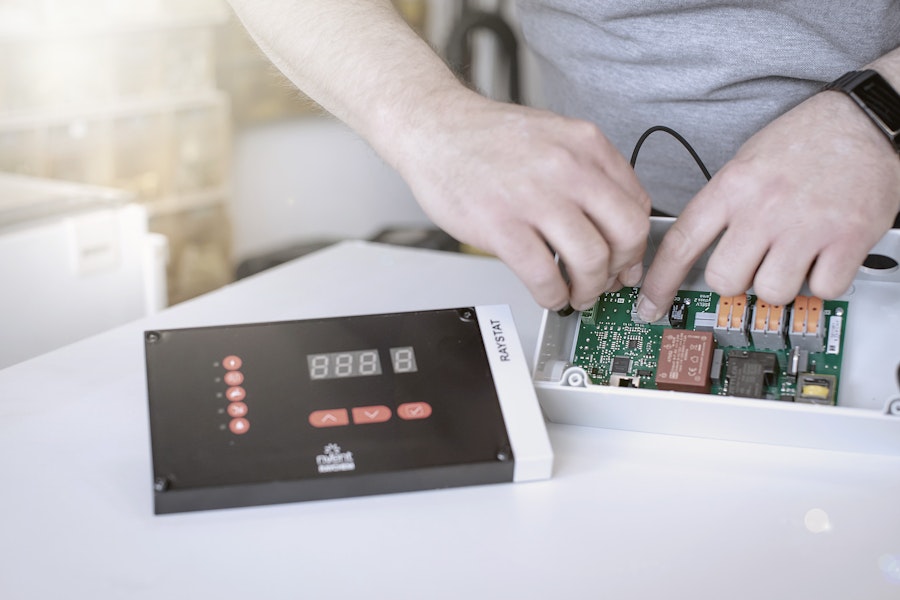
Combine heating cables and heating tapes with a thermostat
Heating cables and heating tapes with thermostats are used, among other things, as pipe trace heating for liquid-carrying pipelines. The temperature can be specifically controlled and monitored via the thermostat, thereby guaranteeing the right viscosity of the liquids and an optimal flow. Our range includes thermostats and controllers for various applications from simple frost protection to complex temperature maintenance.
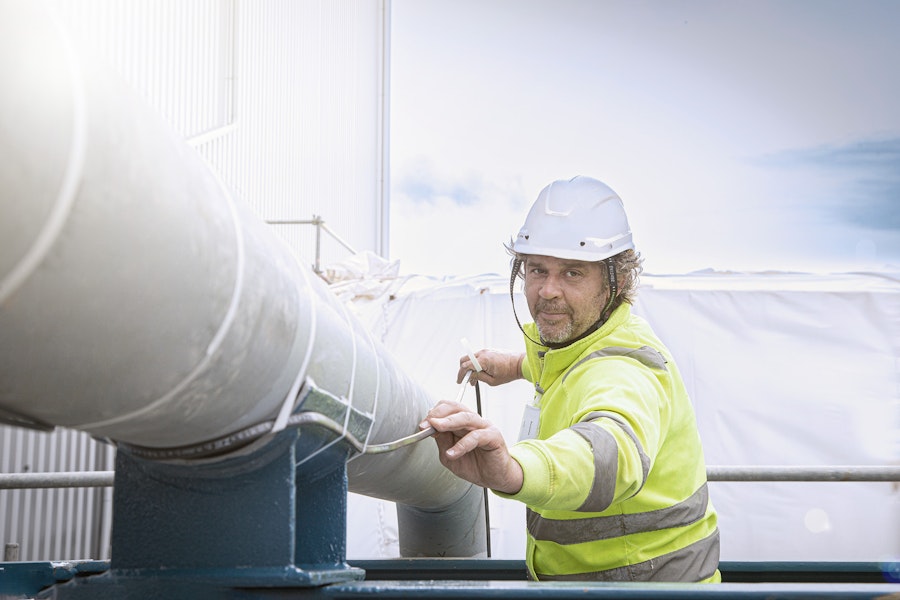
Areas of application
In the industrial sector, heating cables and heating tapes are most commonly used to protect water pipes from freezing and to stabilise and maintain process temperatures. Heating cables and heating tapes are also the professional solution for frost protection on roofs, gutters and downpipes, for tank heating and for trace heating in hazardous areas.

Reliable frost protection for your requirements with ZIEGLER ENGINEERING
More than 50 years of experience and a team of experts make ZIEGLER ENGINEERING the ideal partner when it comes to project development, planning, installation and maintenance of trace heating using heating cables. An extensive range of fixed resistor heating conductors, self-regulating heating tapes and many other products and accessories ensures the ideal solution for every application. Are you planning your next trace heating project? We would be happy to advise you!
Frequently asked questions about heating cables and heating tapes
Electrical trace heating refers to heating tapes or heating cables for heating pipelines, tanks, containers, open spaces, gutters, and floors, among other things. The tapes or cables are used for frost protection or to keep the temperature of viscous media constant, for example.
The VdS prescribes a redundant trace heating design for sprinkler systems. The control cabinet design must also comply with VdS specifications.
Polymer-insulated heating conductors (single-core plastic cable) and mineral-insulated heating conductors with a metallic outer sheath for high temperatures and high outputs.
Heating tapes: Flat design consisting of two conductors, whereby the actual heating element is usually located between the conductors. Most heating tapes are referred to as self-regulated or self-limiting. Heating cables: round design, usually with fixed heating output and a single current-carrying conductor (serial design).
Self-regulating heating tapes (sometimes referred to as self-limiting heating tapes) and resistance heating cables with a fixed resistance value per metre.
These terms can be used synonymously. Each manufacturer has its own naming conventions, even if the technology is the same.
We distinguish between the simple rubber outer sheath (thermoplastic) and the higher-quality fluoropolymer outer sheath, which is more suitable for use in chemical environments, for example.
This is usually a single-core conductor that heats up due to its specific resistance. The following designs are common: Plastic outer sheath (single-core plastic cable), i.e. polymer-insulated, and mineral-insulated heating conductors, i.e. with a metallic outer sheath for high temperatures.
Yes, at least for temperature-critical applications. Even if the heating tapes are self-limiting with regard to their power output, it is usually impossible to maintain a precise temperature. Without a controller, the tape will eventually settle on an equilibrium temperature – which may be significantly higher than the desired temperature.
The heating element is made of a special plastic containing carbon particles. These are embedded between the two parallel copper conductors and form the current paths. When the temperature rises, the plastic expands, thereby causing the carbon particles to move away from each other. This interrupts the current paths, and the heating cable heats less. As soon as the heating cable cools down, the plastic particles contract again, and the current paths are restored, thus causing the heating cable to produce more heat. The self-limiting property of the heating cable causes it to react to temperature fluctuations at any point in the pipe system.
Yes, halogen-free and low-smoke heating tapes are available.
The maximum temperature in the heating cable depends on the type of heating cable or heating tape, as well as various project and environmental parameters. Depending on the type and application, the maximum temperature range for self-regulating heating conductors is between 65°C and 260°C. Polymer-insulated fixed resistor cables can be used up to a max. temperature of 260°C. For mineral-insulated heating cables, this increases to up to 800°C.
The maximum operating temperature for electrical heating tapes depends on the heating tape type and manufacturer. Heating tapes are usually available for different temperature ranges. However, in addition to considering the holding temperature, you should also keep in mind the maximum process-side temperature to which the heating tape is exposed. The limits of the technology are currently in excess of 200°C (with the heating tape switched on) and approx. 260°C (with the heating tape switched off).
Yes, electrical trace heating can heat up a medium under certain conditions. Heating tape has a limited power output, which means it is generally only able to heat empty pipes or containers. If there is sufficient time available, however, a stagnant (non-flowing) medium can be partially heated.
There are various technologies and cables available on the market. To ensure the right product is selected for your application, a case-by-case consideration of the project conditions (e.g. ambient temperature, insulation, pipe diameter or container size, explosive atmosphere, etc.) is required. A complex design carried out by a specialist company is generally what you need here.


Get in touch with our team of experts
ZIEGLER ENGINEERING is your partner when it comes to electrical trace heating. We offer a wide range of products, vast experience and sound expert knowledge.
